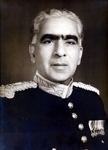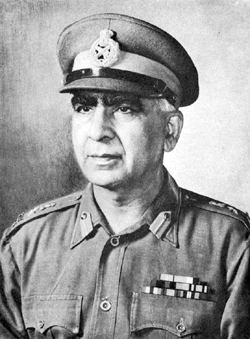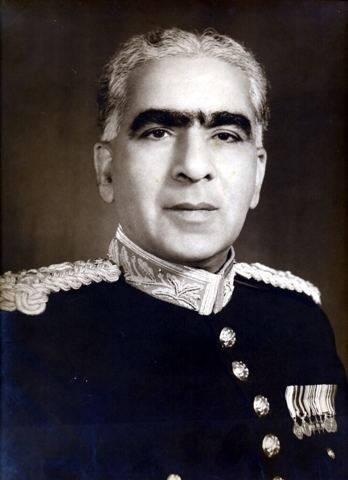Name Pran Thapar Spouse(s) Bimla Thapar Children Karan Thapar | ||
 | ||
Preceded by General Kodendera Subayya Thimayya Born May 8, 1906 ( 1906-05-08 ) Allegiance British Indian Empire India Education Royal Military Academy Sandhurst Battles and wars | ||
Succeeded by General JN Chaudhuri | ||
General Pran Nath Thapar (May 23, 1906 – June 23, 1975) was the fifth Chief of Army Staff of the Indian Army.
Contents

Personal life

General Pran Nath Thapar was born into a prominent Punjabi family. He was the youngest son of Diwan Bahadur Kunj Behari Thapar of Lahore. The historian Romila Thapar is his niece and the conservationalist and tiger expert, Valmik Thapar is his great nephew.
In March 1936, Thapar married Bimla Bashiram, the eldest daughter of Rai Bahadur Bashiram Sahgal and granddaughter of Rai Bahadur Ramsaran Das. Bimla Thapar was a sister of Gautam Sahgal, whose wife Nayantara Sahgal was a daughter of Vijayalakshmi Pandit and niece of Jawaharlal Nehru. General Thapar and Smt. Bimla Thapar had four children, of whom the youngest is the prominent journalist Karan Thapar.
Career
After graduating from Government College, Lahore, he trained at the Royal Military College, Sandhurst, passing out on 4 February 1926 as a second lieutenant. He passed out in the same batch as K.S. Thimayya, who also went on to become Chief of the Army Staff. He spent the next year attached to a British Army battalion stationed in India. On 18 April 1927 he was formally appointed to the Indian Army, ranking as a second lieutenant. He was promoted to lieutenant on 4 May 1928. He did his regimental duties with the 2nd battalion, 1st Punjab Regiment for ten years and later attended the staff courses at Quetta in India and Minley Manor in England. He was promoted to captain on 4 February 1935.
He served in Burma during the second World War in 1941 and later in the Middle East and Italy. By October 1942 he was serving on the staff as a brigade major. Promoted to major on 4 February 1943, he was appointed as assistant military secretary in 1945. He commanded the 1st Battalion of the 1st Punjab Regiment in Indonesia in 1946 and later went on to serve as the commander of the 161 Indian Infantry Brigade in East Bengal. During the Partition of India, Thapar officiated as the Director of Military Operations and Intelligence.
In November 1947, he was promoted to the rank of major general. He served as the Chief of the General Staff for a few months and later as Military Secretary until August 1949. He was appointed Master General of Ordnance on August 1949. He commanded an Infantry Division for four years till 1954 and was promoted to the rank of lieutenant general in 1954 as Commander of a Corps. He was selected to attend the Imperial Defence College, London in 1955. After successful completion of the course, he was appointed General Officer Commanding-in-Chief, Southern Command. He became General Officer Commanding-in-Chief of Western Command in 1959. Thapar took over as Chief of Army Staff of the Indian Army on 8 May 1961 and served until 19 November 1962. He was also colonel of the Rajputana Rifles. He was head of Indian army during the Sino-Indian War and resigned in disgrace on 19 November 1962 for his dismal failure during the war.
Later life
After retirement, he was appointed as Indian Ambassador to Afghanistan from August 1964 to January 1969. He died on his farm, White Gates, in Chhattarpur, New Delhi, on 23 January 1975 at the age of 69.
